Features
A dark gloom over the Fourth Estate
Published
7 years agoon
By
Olu Emmanuel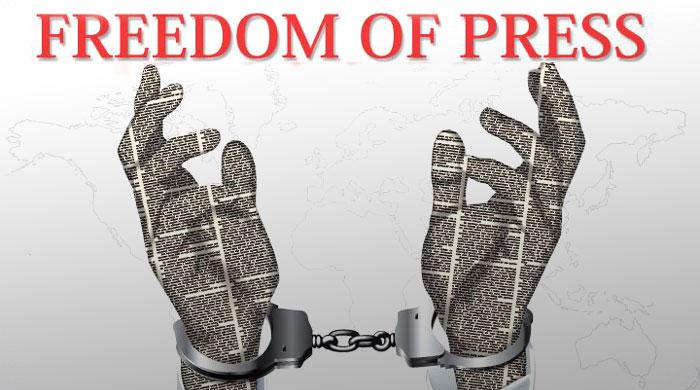
The Freedom of the Press 2017 report came with everything but glad tidings for journalists and journalism around the world–a damning verdict that portends grave danger for a free press and vibrant democracy in global context.
By Gbenga Ogundare
Freedom House, the international watchdog organization that monitors the status of freedom around the world, laments April 28 that global press freedom declined to its lowest point in 13 years in 2016 due to unprecedented threats to journalists and media outlets in major democracies, intensified crackdowns by authoritarian states, and moves by Russia and China to increase their influence beyond their borders.
According to its Freedom of the Press 2017 annual report on media freedom around the world, only 13 percent of the world’s population enjoys a Free press—that is, a media environment where coverage of political news is robust, the safety of journalists is guaranteed, state intrusion in media affairs is minimal, and the press is not subject to onerous legal or economic pressures.
Forty-two percent of the world’s population has a Partly Free press.
The report also revealed that forty-five percent live in countries where the media environment is Not Free.
“Political leaders and other partisan forces in many democracies—including the United States, Poland, the Philippines, and South Africa—attacked the credibility of independent media and fact-based journalism, rejecting the traditional watchdog role of the press in free societies,” said Jennifer Dunham, director of research for Freedom of the Press.
“The fierce attacks we have seen on factual reporting pose a danger to freedom of the press around the world,” said Michael J. Abramowitz, president of Freedom House. “When politicians lambaste the media, it encourages their counterparts abroad to do the same. Vitriolic attacks on individual journalists and news outlets in the United States undermine our democracy’s status as a model of press freedom.”
Authoritarian regimes have aggravated the problem by working to influence media in the democratic world.
“Vladimir Putin’s Russia is a trailblazer in globalizing state propaganda,” Dunham said. “Russia has manipulated news and social media content in Eurasia and Eastern Europe. We are now seeing Russian manipulation expand into Western Europe and the United States.”
Some of the steepest declines on the report’s 100-point scale occurred in Poland, Turkey, and Hungary. The deterioration in Hungary and Turkey has continued for several years, but the sharp drop in Poland is a new and alarming development, the report says.
However, there were a few positive developments during the year, as governments in Afghanistan, Argentina, Panama, and Sri Lanka moved to improve media environments that had suffered under their predecessors. But the practical effects of many of these improvements remain to be seen.
Other findings in the report include:
- Politicians in democratic states launched or escalated efforts to shape news coverage by delegitimizing media outlets, exerting political influence over public broadcasters, and raising the profile of friendly private outlets.
- Officials in more authoritarian settings such as Turkey, Ethiopia, and Venezuela used political or social unrest as a pretext to intensify crackdowns on independent or opposition-oriented outlets.
- Authorities in several countries in sub-Saharan Africa, the Middle East, and Asia extended restrictive laws to online speech, or simply shut down telecommunications services at crucial moments, such as before elections or during protests.
- Among the countries that suffered the largest declines on the report’s 100-point scale in 2016 were Poland (6 points), Turkey (5), Burundi (5), Hungary (4), Bolivia (4), Serbia (4), and the Democratic Republic of Congo (4).
- The world’s 10 worst-rated countries and territories were Azerbaijan, Crimea, Cuba, Equatorial Guinea, Eritrea, Iran, North Korea, Syria, Turkmenistan, and Uzbekistan.
EUROPE
- In Poland, the conservative Law and Justice party government boycotted leading critical media and asserted politicized control over the public broadcaster, while state-owned companies redirected their advertising money to government-friendly outlets.
- The chaotic aftermath of a July coup attempt against Turkish president Recep Tayyip Erdogan exacerbated an already perilous situation for independent, critical media. Acting under a state of emergency, authorities shuttered scores of outlets, forcing thousands of journalists and media workers out of their jobs, and clamped down on social media and critical websites.
- The conservative government in Hungary has been gradually consolidating its control over the media since taking power in 2010. The closure and subsequent sale in October 2016 of Népszabadság, one of Hungary’s oldest and most prominent newspapers, demonstrated the government’s determination to silence critical outlets.
- In Serbia, Prime Minister Aleksandar Vucic has outsourced much of his campaign to discredit unfriendly media outlets to the pro-government tabloid Informer, which has smeared critical journalists with unfounded accusations of mafia ties or collusion with foreign intelligence agencies.
ASIA-PACIFIC
- The Chinese authorities imposed some of the region’s harshest penalties for online criticism. The government also tightened restrictions on news production by web portals and blocked additional foreign websites and apps.
- China’s global influence was felt through media outlets owned by large private companies that depend on Beijing’s goodwill for their economic success. Hong Kong provided a powerful example of this phenomenon in 2016: Privately owned, pro-Beijing media in the self-governing territory repeatedly carried coerced statements by political prisoners held in mainland China.
- In the Philippines, President Rodrigo Duterte’s slurs and death threats against journalists further inflamed an already dangerous environment for the press.
EURASIA
- Eurasia continues to be the worst-performing region in the world for press freedom.
- At one of Russia’s last independent media groups, RBC, three editors were replaced by recruits from the state-owned TASS news agency after reporting on apparent corruption involving the family and associates of President Putin.
- Faced with Kremlin-controlled outlets that disseminate disinformation and undermine the legitimacy of Ukrainian institutions, the government in Kyiv continued to limit access to numerous Russian outlets and deny entry to dozens of Russian journalists.
- Security forces in Armenia showed their lack of respect for the press during another summer of mass protests, brutally assaulting several journalists.
SUB-SAHARAN AFRICA
- The Ethiopian government—already one of the world’s worst press freedom offenders—intensified its crackdown on independent media in 2016, both before and after an October emergency declaration designed to suppress antigovernment protests.
- In South Africa, long considered one of the freest media environments in sub-Saharan Africa, the politicized leadership of the SABC fired journalists who protested an order to limit coverage of violent protests in the run-up to local elections.
- In the Democratic Republic of Congo, where President Joseph Kabila’s attempts to remain in office beyond his mandate triggered a political crisis, authorities interfered with the operations of independent and foreign media outlets and obstructed social media access.
- The new government of Tanzanian president John Magufuli responded to criticism in the press and social media by prosecuting journalists for defamation and imposing new restrictions through the Media Services Act.
MIDDLE EAST AND NORTH AFRICA
- The ongoing conflicts in Iraq, Syria, and Yemen made those countries the world’s three deadliest places for journalists in 2016.
- Tunisia’s attempts to build a stable democracy with a free press were hampered by ongoing security concerns, the president’s rhetorical attacks on the media, and a rise in police interference with journalists’ work.
- In Israel, Prime Minister Benjamin Netanyahu used his Facebook page to excoriate two high-profile investigative journalists, and he was accused of colluding with key media owners to shape favorable coverage.
AMERICAS
- Donald Trump has disparaged the press both as a candidate and now as president of the United States, rejecting the news media’s role in holding governments to account for their words and actions.
- Amid the worsening economic and political crises in Venezuela, journalists frequently encountered interference or were denied physical access while attempting to cover protests. Reporters at demonstrations were attacked by police and protesters.
- In Bolivia, the administration of President Evo Morales targeted critical journalists with threats of prosecution and accused three media outlets that covered a corruption case against him of forming a “cartel of lies.”
- The government of President Mauricio Macri in Argentina has instituted more favorable media policies than its predecessors, resuming regular press conferences and reining in politicized state advertising expenditures. But the country’s largest private outlets showed signs of returning to an old pattern of collusion with the government.
COUNTRIES TO WATCH
The following countries are among those moving toward important changes in press freedom—for better or worse—in the coming year.
Australia: Authorities’ aggressive leak investigations, including use of a telecommunications law to collect journalists’ metadata without a warrant, could have a chilling effect on the country’s robust media sector.
Cambodia: Prime Minister Hun Sen’s determination to avoid a repeat of 2013 general elections, in which the opposition made significant gains, could translate into a media crackdown ahead of upcoming polls.
Ecuador: With a new administration set to take office after the 2017 election, government-owned media outlets organized by outgoing president Rafael Correa may enjoy greater editorial independence.
Egypt: As the country’s security and economic crises intensify, the government of President Abdel Fattah al-Sisi is attempting to assert more direct control over the private media and suppress criticism.
Gambia: Newly elected president Adama Barrow’s promise of a “new era” following 22 years of authoritarian rule has raised hopes that he will overhaul suffocating media laws and end the intelligence agency’s notorious intimidation of journalists.
Kenya: Despite a recent rollback of repressive media laws, journalists still face criminal prosecution under security legislation, and violent attacks against media workers are already increasing in the run-up to August 2017 elections.
Myanmar: The governing National League for Democracy will face pressure to improve its support for press freedom after presiding over stalled legislative reforms, an increase in libel cases, and attempts to curb reporting on corruption and human rights abuses during 2016.
Philippines: President Rodrigo Duterte’s subordinates and supporters could act on his threats of violence against journalists who criticize abuses linked to the government’s war on drugs.
Ukraine: Recent democratic gains have bolstered media freedom overall, but restrictions on Russian outlets and attempts to foster “patriotic” reporting raise questions about the government’s commitment to media autonomy.
United States: It remains unclear whether President Trump’s criticism of the media will translate into systematic restrictions on journalists.
You may like
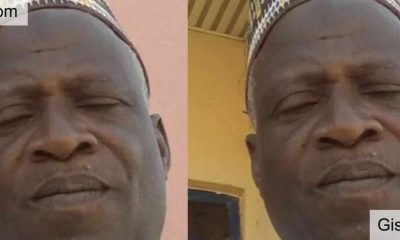

Body of missing journalist found inside soakaway pit
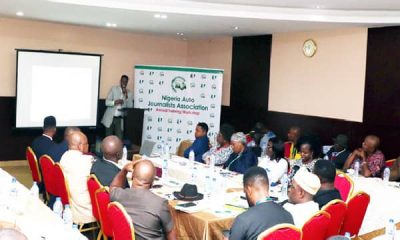

NADDC, Coscharis, Weststar, others back NAJA Training Workshop
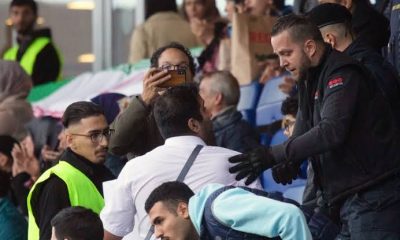

Journalist arrested, more than 80 media workers detained in Iran
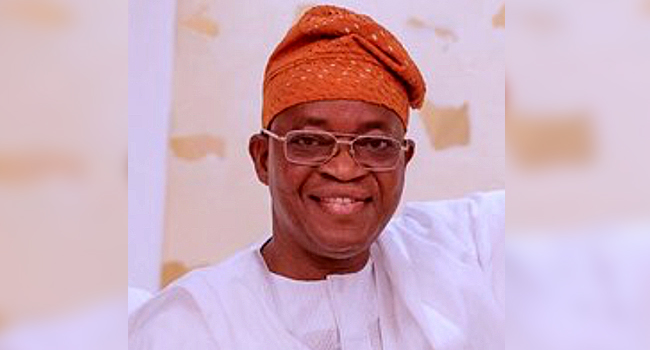

Oyetola condemns shooting of journalist, citizen by police in Osun
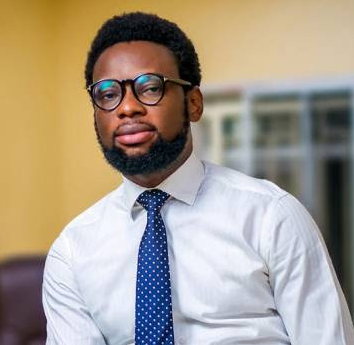

Journalist Fisayo Soyombo detained by Nigerian police over report on alleged high-level police corruption


Ebonyi Governor orders arrest of journalist over alleged ‘fake and incisive’ Facebook post
Trending

 Football5 days ago
Football5 days agoGuardiola advised to take further action against De Bruyne and Haaland after both players ‘abandoned’ crucial game
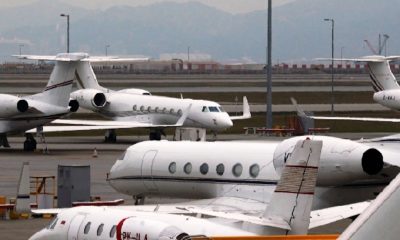
 Aviation7 days ago
Aviation7 days agoNCAA suspends three private jet operators for engaging in commercial flights
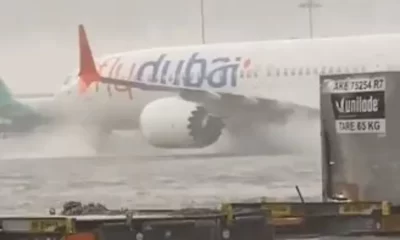
 Aviation6 days ago
Aviation6 days agoDubai international airport cancels flights as flood ravages runway, UAE

 Featured3 days ago
Featured3 days agoPolice reportedly detain Yahaya Bello’s ADC, other security details

 Comments and Issues5 days ago
Comments and Issues5 days agoNigeria’s Dropping Oil Production and the Return of Subsidy

 Education4 days ago
Education4 days agoEducation Commissioner monitors ongoing 2024 JAMB UTME in Oyo

 Business4 days ago
Business4 days agoMaida, university dons hail Ibietan’s book on cyber politics
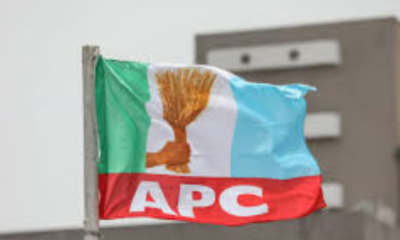
 Featured1 week ago
Featured1 week agoRelationship between Oyetola, Omisore remains cordial — Osun APC

